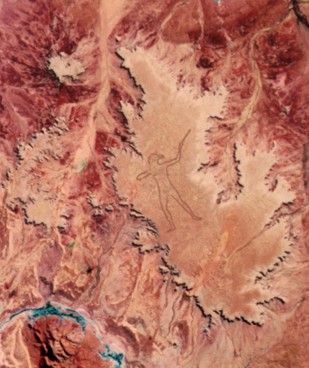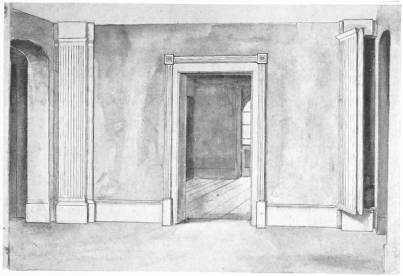Every even number is the sum of two primes.
Is that true? No one knows. Originally proposed in 1742, it’s been tested as far as 1018, but the jury’s still out.
Every even number is the sum of two primes.
Is that true? No one knows. Originally proposed in 1742, it’s been tested as far as 1018, but the jury’s still out.
nelipot
one who is walking barefoot
In December 1796, a young man named Graham, a resident of Lancaster, went to Workington, to fulfil a promise of marriage made to a young woman of that town. — On entering the room in which she also was, he became indisposed, and tottering to where she sat, fell dead at her feet.
— Kirby’s Wonderful and Scientific Museum, 1803

Charter pilot Trevor Wright was flying over South Australia in 1998 when he discovered something astonishing: the colossal image of a human being, 4.2 kilometers long, carved into the earth.
It must have taken weeks to etch the figure into the arid soil with a tractor and a plough. Even planning the work probably required aerial photography or satellite imagery, surveying skill, and GPS technology.
But no one knows who created the figure, when, or why.
On May 31, 1886, tens of thousands of workers pulled the spikes from railroad lines throughout the South, shifted one rail 3 inches, and spiked them in again.
No one had standardized the gauges.
On the 20th of May, 1736, the body of Samuel Baldwin, Esq., was, in compliance with a request in his will, buried, sans ceremonie, in the sea at Lymington, Hants. His motive for this extraordinary mode and place of interment was to prevent his wife from ‘dancing on his grave,’ which she had frequently threatened to do in case she survived him.
— Frank H. Stauffer, The Queer, the Quaint and the Quizzical, 1882

“Who the hell wants to hear actors talk?” — H.M. Warner, co-founder of Warner Brothers, 1927
Hamlet’s “to be or not to be” soliloquy rendered in jargon, from Sir Arthur Quiller-Couch’s On the Art of Writing (1916):
To be, or the contrary? Whether the former or the latter be preferable would seem to admit of some difference of opinion; the answer in the present case being of an affirmative or of a negative character according as to whether one elects on the one hand to mentally suffer the disfavour of fortune, albeit in an extreme degree, or on the other to boldly envisage adverse conditions in the prospect of eventually bringing them to a conclusion. The condition of sleep is similar to, if not indistinguishable from, that of death; and with the addition of finality the former might be considered identical with the latter: so that in this connection it might be argued with regard to sleep that, could the addition be effected, a termination would be put to the endurance of a multiplicity of inconveniences, not to mention a number of downright evils incidental to our fallen humanity, and thus a consummation achieved of a most gratifying nature.
See also Hamlet in Klingon.
James Bond never really explains why he likes his martinis “shaken, not stirred,” so in 1999 the University of Western Ontario’s biochemistry department decided to find out.
They discovered that a shaken gin martini has stronger antioxidant properties than a stirred one — which would help Bond avoid cardiovascular disease, stroke, and cataracts.
In their writeup for the British Medical Journal, they conclude, “007’s profound state of health may be due, at least in part, to compliant bartenders.”
See also Silly Old Bear.

That hollow column on the right is a “priest-hole,” a hiding place for Catholic priests, who were hunted with Elmer-Fudd-like tenacity when Elizabeth took the English throne around 1560. A “papist” could be hanged for saying mass; converting a Protestant was high treason.
Fortunately, the priests had a Bugs Bunny in the shape of Nicholas Owen, a Jesuit laybrother who spent his life devising secret chambers and hiding places for persecuted Catholics. “Pursuivants” could spend as much as a fortnight fruitlessly tearing down paneling and tearing up floors while the priest held his breath a wall’s thickness away.
Ickily, some of these hidden priests starved to death.